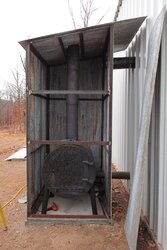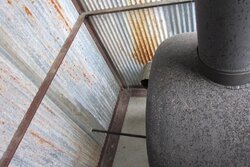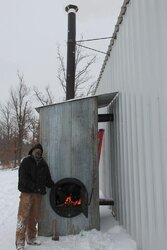Hello, new to this site, and it looks great!
I just built a large wood stove and then built a small building around it. The plan is that I will send the heat produced by the stove, which is then captured by the room, into my shop. Well I built it and have it up and running. I initially just had a piece of 6" triple wall at the top of the building coming into my shop, with another piece of 6" down near the floor to take air from the shop into the little building. The air coming out of the pipe was flowing ( slowly) just by convection and was 330 degrees fahrenheit. After about 6 hours my shop was only 5 degrees warmer. Thinking it was a flow issue, I replaced the 6" with a piece about 24" in diameter. After a few hours with that setup, still no change. I think I need a fan to encourage the air flow. So my question is, does anyone know of a duct type fan (maybe around 12") That can take that kind of heat?
I just built a large wood stove and then built a small building around it. The plan is that I will send the heat produced by the stove, which is then captured by the room, into my shop. Well I built it and have it up and running. I initially just had a piece of 6" triple wall at the top of the building coming into my shop, with another piece of 6" down near the floor to take air from the shop into the little building. The air coming out of the pipe was flowing ( slowly) just by convection and was 330 degrees fahrenheit. After about 6 hours my shop was only 5 degrees warmer. Thinking it was a flow issue, I replaced the 6" with a piece about 24" in diameter. After a few hours with that setup, still no change. I think I need a fan to encourage the air flow. So my question is, does anyone know of a duct type fan (maybe around 12") That can take that kind of heat?




